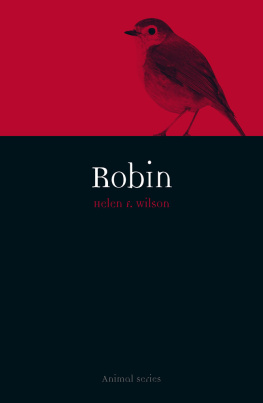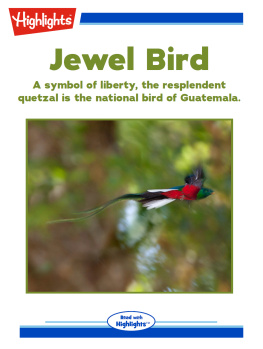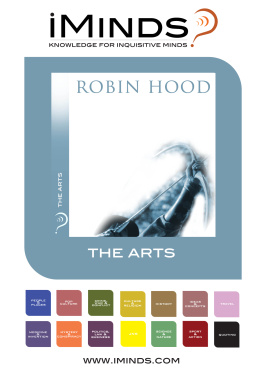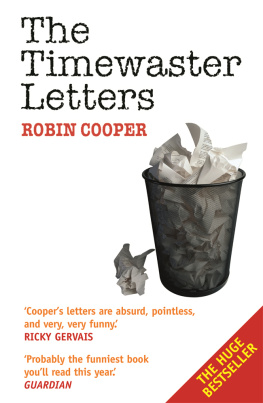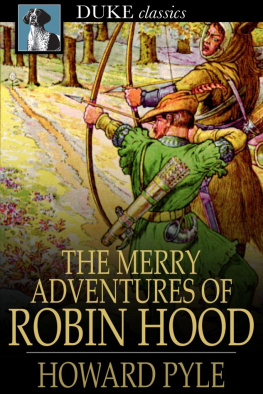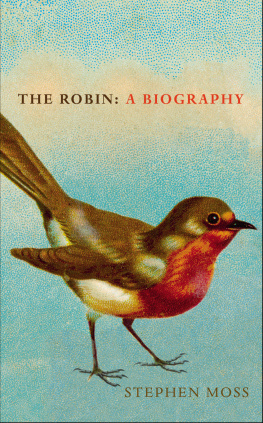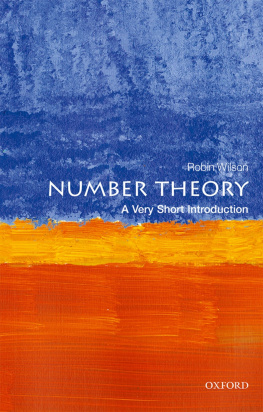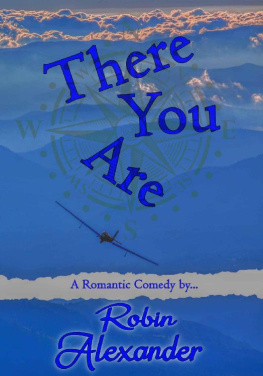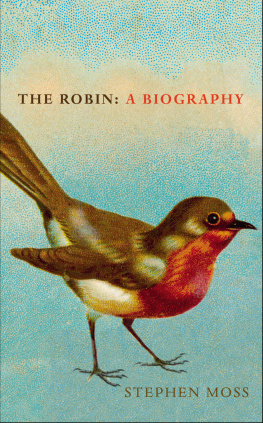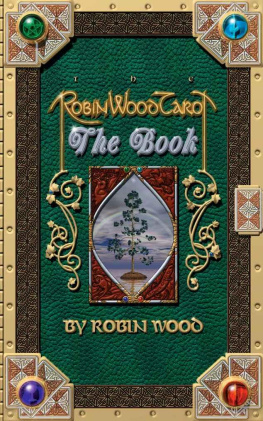Robin

Animal
Series editor: Jonathan Burt
Already published
Albatross Graham Barwell Ant Charlotte Sleigh Ape John Sorenson Badger Daniel Heath Justice Bat Tessa Laird Bear Robert E. Bieder Beaver Rachel Poliquin Bedbug Klaus Reinhardt Bee Claire Preston Beetle Adam Dodd Bison Desmond Morris Camel Robert Irwin Cat Katharine M. Rogers Chicken Annie Potts Cockroach Marion Copeland Cow Hannah Velten Crab Cynthia Chris Crocodile Dan Wylie Crow Boria Sax Deer John Fletcher Dog Susan McHugh Dolphin Alan Rauch Donkey Jill Bough Duck Victoria de Rijke Eagle Janine Rogers Eel Richard Schweid Elephant Dan Wylie Falcon Helen Macdonald Flamingo Caitlin R. Kight Fly Steven Connor Fox Martin Wallen Frog Charlotte Sleigh Giraffe Edgar Williams Goat Joy Hinson Goldfish Anna Marie Roos Gorilla Ted Gott and Kathryn Weir Guinea Pig Dorothy Yamamoto Hare Simon Carnell Hedgehog Hugh Warwick Hippopotamus Edgar Williams Horse Elaine Walker Human Amanda Rees and Charlotte Sleigh Hyena Mikita Brottman Jellyfish Peter Williams Kangaroo John Simons King fisher Ildiko Szabo Leech Robert G. W. Kirk and Neil Pemberton Leopard Desmond Morris Lion Deirdre Jackson Lizard Boria Sax Llama Helen Cowie Lobster Richard J. Kin Mole Steve Gronert Ellerhoff Monkey Desmond Morris Moose Kevin Jackson Mosquito Richard Jones Moth Matthew Gandy Mouse Georgie Carroll Nightingale Bethan Roberts Octopus Richard Schweid Ostrich Edgar Williams Otter Daniel Allen Owl Desmond Morris Oyster Rebecca Stott Parrot Paul Carter Peacock Christine E. Jackson Pelican Barbara Allen Penguin Stephen Martin Pig Brett Mizelle Pigeon Barbara Allen Polar Bear Margery Fee Rabbit Victoria Dickinson Raccoon Daniel Heath Justice Rat Jonathan Burt Rhinoceros Kelly Enright Robin Helen F. Wilson Salmon Peter Coates Sardine Trevor Day Scorpion Louise M. Pryke Seal Victoria Dickenson Shark Dean Crawford Sheep Philip Armstrong Skunk Alyce Miller Snail Peter Williams Snake Drake Stutesman Sparrow Kim Todd Spider Katarzyna and Sergiusz Michalski Squid Martin Wallen Swallow Angela Turner Swan Peter Young Tiger Susie Green Tortoise Peter Young Trout James Owen Turtle Louise M. Pryke Vulture Thom van Dooren Walrus John Miller and Louise Miller Wasp Richard Jones Whale Joe Roman Wild Boar Dorothy Yamamoto Wolf Garry Marvin Woodpecker Gerard Gorman Zebra Christopher Plumb and Samuel Shaw
Robin
Helen F. Wilson

For Esther
Published by
REAKTION BOOKS LTD
Unit 32, Waterside
4448 Wharf Road
London N1 7UX, UK
www.reaktionbooks.co.uk
First published 2022
Copyright Helen F. Wilson 2022
All rights reserved
No part of this publication may be reproduced, stored in a retrieval system or transmitted, in any form or by any means, electronic, mechanical, photocopying, recording or otherwise, without the prior permission of the publishers
Printed and bound in India by Replika Press Pvt. Ltd
A catalogue record for this book is available from the British Library
eISBN 978 1 78914 625 7
Contents

European robin (Erithacus rubecula).
A Familiar Bird
What kind of a bird is he? Mary asked.
Doesnt tha know? Hes a robin redbreast,
an theyre th friendliest, curiousest birds alive.
Frances Hodgson Burnett, The Secret Garden (1911)
For such a small bird, the European robin (Erithacus rubecula) has a remarkable portfolio. With its distinctive red breast, it is extraordinarily easy to identify and has a reputation for curiosity, friendship and intimacy that has earned it a sizeable presence in folklore and a diverse set of social and cultural histories. It is said that common species can suffer in popularity on account of being so familiar as to lack novelty; in this matter, the robin has not only avoided such a fate but has emerged triumphant.
The robin is celebrated as a harbinger of seasonal change and a national treasure; it has secured a firm place in a well-established range of Christmas iconography and played a key role in understandings of bird migration and magnetic sense. It has taught lessons in morality and Christian faith, played a prominent role in the founding story of a major city and become a mascot for a variety of environmental campaigns. The popularity of the European robin has seen its name imposed on dozens of birds around the world scrub robins, bush robins, magpie-robins, birds of all colours and sizes. Some of these robins bear a striking resemblance to the European bird, others less so. Whether the American robin, the fluorescent-coloured robins of Australia or the endangered magpie-robin of the Seychelles, these birds have criss-crossing cultural histories, even if scientifically they are not always closely related. (Throughout the book, and to avoid confusion, robin will refer to the European robin, and all other robins will be individually introduced.)

James Bolton, European Robin (Erithacus rubecula) and Eggs, withWild Strawberry, c. 1768, watercolour and gouache over graphite, on parchment.
Given the distances involved, it was highly unlikely to have been a British bird, but its quick association with Britain gives some indication of the cultural symbolism that it carries.
It is not only in cultural history that robins have made an impression. It was the robins familiarity and ease with which it could be caught and ringed that saw it become the focus of a study that was later credited with changing ornithology. David Lacks The Life of the Robin was based on field observations at Dartington Hall in Devon, UK, where he was a biology teacher during the 1930s. Lack colour-ringed adult birds and made detailed notes on the function of robin territory, pair formation, migration and the purpose of robin song, to develop a comprehensive account of robin behaviour and ecology across an annual cycle. This was coupled with his observations of captive breeding pairs that were housed in two purpose-built aviaries. Lacks study, which he dedicated to all those robins that permitted his intrusions,

Christmas postage stamp from Luxembourg, featuring the robin in snow, 2007.
American robin (Turdus migratorius). |

